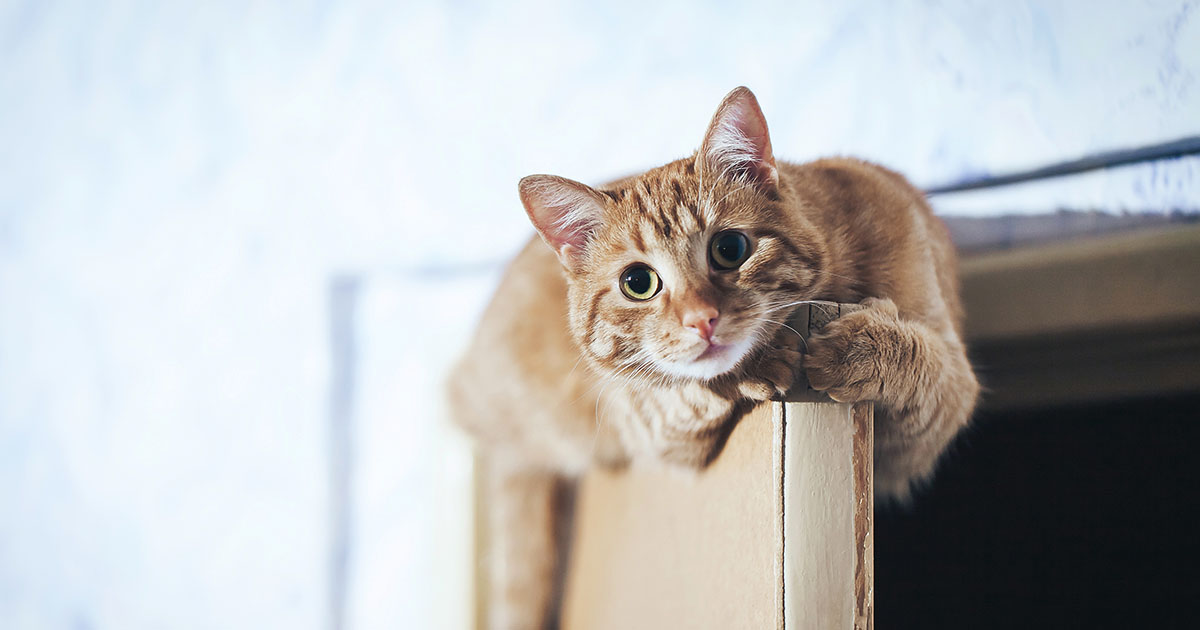If there’s one thing at which cats excel, it’s walking on a precariously narrow shelf, branch or cabinet, and doing it with a nonchalant attitude. So what is it about cats that gives them their superior balance? It’s all in their anatomy.
The Vestibular System: The Reason Up Is Up and Down Is Down
The vestibular system is not unique to cats; many animals have one, including humans. But it controls your cat’s sense of balance and coordinates eye and head movement, so it’s worth discussing here.
The vestibular system has components in the brain and the inner ear. The inner ear houses the vestibular apparatus, which has several fluid-filled canals. When your cat moves their head, the fluid in the canals shift and a signal is sent to their brain that registers where their head is. The vestibular apparatus can tell if your cat is moving or standing still, if only their head is moving, and even if they are upside down.
The vestibular system is a major part of the aerial righting reflex — the reason why cats can (almost) always land on their feet. The full details behind the aerial righting reflex can be found here; but to summarize, falling cats rotate their heads, arch and twist their spines, use their legs to control how much they spin and then (hopefully) land on all four paws. Whether they are successful or not depends on the height of the fall and the cat’s physical condition.
A Flexible Backbone and Tiny Collarbones
A cat’s bone structure is one of the main reasons they can balance well, are flexible and can squeeze through tight spaces. Cats have 30 vertebrae (back bones), which is six more than people, and their spine is unusually supple. They have rudimentary clavicles (collarbones), and muscles (not bones) connect their shoulder blades to their body. All of these skeletal features give them superior flexibility and agility and also extend their stride, making them fast runners.
A Counterweight Tale
Tails are a key communication tool for cats and they also help cats balance. By acting as a counterbalance, a cat’s flexible tail can keep them steady when they’re walking a fine line. But what about cats without tails? Cats that were born without tails can still balance, and if a cat’s tail was removed due to an injury or disease, they can learn to compensate for the loss.
Whiskers Are for Sensing, Not Balance
There is a myth that a cat’s whiskers help them balance, but it is just that — a myth. Whiskers do help cats sense their environment though. The follicles that whiskers grow from are surrounded by sensory receptors that transmit details of your cat’s environment (through whisker movement) to their brain. These receptors are so sensitive they can even detect vibrations in the air. Whiskers help cats navigate around objects (particularly in the dark) and can help them decide whether they can squeeze through that tiny gap or not.
The reason this myth exists may be due to the reaction cats have if their whiskers are cut off. Removing their ability to sense their environment can be disorientating and stressful. That’s why you should never cut a cat’s whiskers unless it’s necessary for medical reasons.
There’s no (clavicle) bones about it, a cat’s anatomy is built for balancing. And if they do lose their balance, they have a handy righting system, too.
RELATED POST: Debarking Pet Myths: The Truth About Cats and Their Nine Lives







